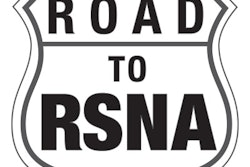The researchers from Brigham and Women's Hospital assessed the accuracy of Lung-RADS for evaluating subsolid nodules -- including ground-glass nodules and part-solid nodules -- compared with other reporting tools such as risk-prediction calculators and guidelines based on nodule volume that are used in the Dutch-Belgian Randomized Lung Cancer Screening (NELSON) trial.
The group used these reporting tools to examine 600 subsolid nodules on CT scans taken from the U.S. National Lung Screening Trial (NLST).
In total, 434 nodules were true subsolid lung nodules. Among these, Lung-RADS estimated a much smaller malignancy rate for nodules categorized as Lung-RADS 2 and 3, compared with the actual malignancy rate (p < 0.001).
Overall, Lung-RADS was less accurate than the Brock risk prediction calculator at determining the malignancy of subsolid nodules but roughly as accurate as the NELSON guidelines. Both the Lung-RADS and NELSON guidelines similarly underestimated subsolid nodule malignancy.
"Subsolid nodules have a higher risk of malignancy than expected per the Lung-RADS guideline document, and use of a risk prediction calculator (i.e., the Brock model) allowed for better prediction of malignancy than Lung-RADS for subsolid nodules," Dr. Mark Hammer told AuntMinnie.com.
Current management guidelines for subsolid nodules found on CT lung screening exams may require revision, particularly for those categorized as Lung-RADS 2 and 3, Hammer said.



















